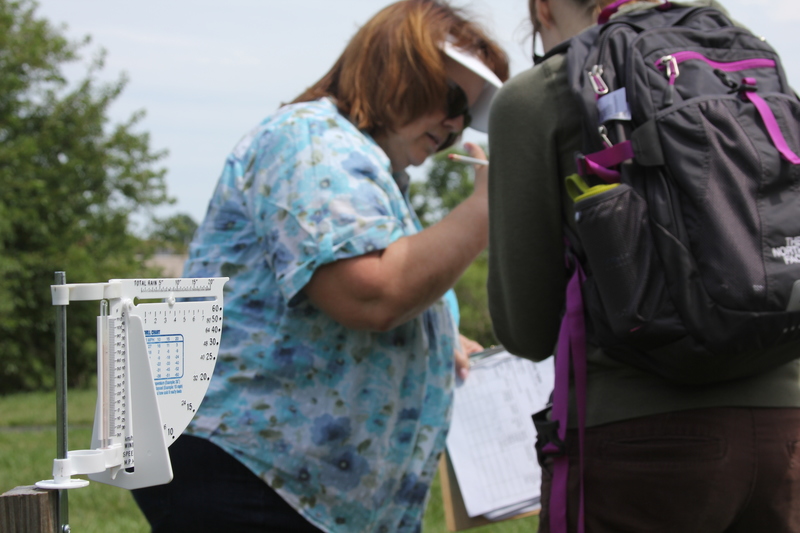On a steamy afternoon in July, teachers headed out to different areas in Lewes with tools in hand to measure the weather.
Kathleen Swingle, an eighth-grade science teacher at Beacon Middle School, was one of 34 teachers participating in the Made Clear Climate Science Academy July 16 to 18 at the Virdin Center in Lewes.
Using an anemometer, Swingle checked wind speed, wind direction and relative humidity. Then she recorded vegetation in a specific area to determine how it can reduce emissions – the kind that can lead to global warming.
It's a lesson that Swingle said she would give to her students when they return to school; the program lets her network with other teachers and learn new teaching material.
“I'm excited,” said Swingle. “We'll be able to share things that are working or things that are not working.”
Swingle said she has used antacid pills such as Alka-Seltzer for experiments about carbon dioxide emissions. The bubbling pills release carbon dioxide when they are added to water, she said, and are used in a unit about the Greenhouse Effect. Now, Swingle said, she'll be able to share experiments like that with other teachers and get ideas from them on ways to bring exciting lessons into the classroom.
This is the second group of teachers participating in the Made Clear program, which started in 2013. The program is funded through a five-year grant from the National Science Foundation, said Melissa Rodgers, education coordinator for Made Clear.
“We're working to support teachers with their understanding of climate change to create engaging lessons for their students,” she said.
Throughout the week, teachers worked with presenters from Delaware Sea Grant, National Oceanic Atmospheric Administration, University of Delaware, University of Maryland and University of California Berkeley who helped them learn new ways of teaching climate change to students.
“This is something that can be done. It's not an insurmountable task,” said Andrea Drewes, member of the learning sciences team for the University of Delaware.
Swingle said she already incorporates climate change ideas in her lesson plans – mostly how plants and carbon dioxide affect temperature.
Keeping track of long-term climate data is among her goals, she said, adding the Cape Henlopen school district's location along the shoreline is perfect for tracking sea level rise along the coast.
“It's getting kids to think how they want their environment to look,” she said. “What will it look like when you're 24 or 34?”
Swingle and the other teachers will participate in five more session throughout the year. For more information on the Made Clear program, go to www.madeclear.org.
Melissa Steele is a staff writer covering the state Legislature, government and police. Her newspaper career spans more than 30 years and includes working for the Delaware State News, Burlington County Times, The News Journal, Dover Post and Milford Beacon before coming to the Cape Gazette in 2012. Her work has received numerous awards, most notably a Pulitzer Prize-adjudicated investigative piece, and a runner-up for the MDDC James S. Keat Freedom of Information Award.























































